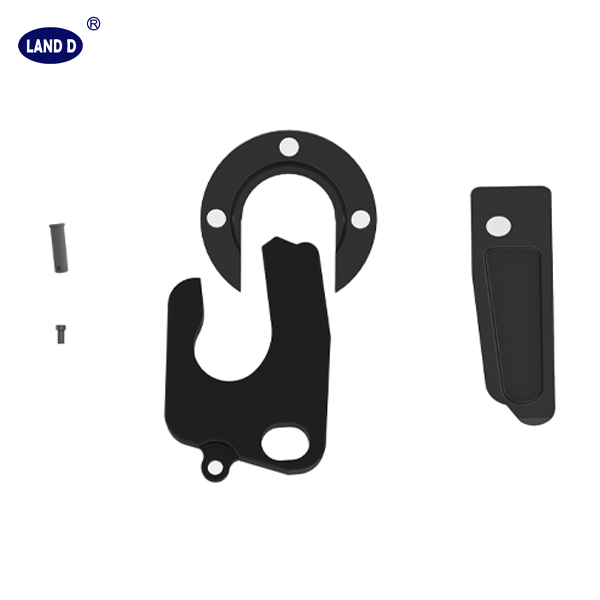Oṣu Kẹrin. 25, 2024 15:02 Pada si akojọ
Karun kẹkẹ itoju Karun Wheel
Ile-iṣẹ Iṣẹ Onibara Kenworth nfunni ni imọran pupọ nipa karun kẹkẹ itoju. Ni akọkọ, ronu ailewu nigbati o ba n ṣayẹwo kẹkẹ karun rẹ. Awọn nkan pupọ lo wa ti awakọ le ṣe:
JOST teepu Karun kẹkẹ 37C titunṣe irin ise trailer awọn ẹya ara
•Keep the fifth wheel lubricated.
•Make sure that it is still connecting properly to the trailer.
•Verify that a sliding fifth wheel is locking properly.
•All this can and should be done without touching the fifth wheel yourself.
Ṣaaju ki o to bẹrẹ ayewo rẹ, jẹ ki gbogbo eto kẹkẹ karun-un mọ daradara. Nu oke awo, biraketi, ifaworanhan awo, iṣagbesori awọn igun, ati fasteners. Nigbamii ti, ki o le ṣe akiyesi daradara ni kẹkẹ karun, lo ina wahala tabi filaṣi fun ayewo wiwo rẹ. Gbero lati gba iṣẹju 10 tabi 15 fun iṣẹ akanṣe yii.
Test those jaws. This is the safest way to examine your fifth wheel’s jaws and make sure they aren’t worn out…it’s a two-person test, so ask someone to help you out for a moment.
•Latch the fifth wheel onto the trailer as usual.
•Set the trailer brakes.
•Have your assistant stand where he or she can see the fifth wheel.
•Move the chassis back and forth slightly.
•Have your assistant watch to see if the plate moves relative to the trailer.
Ti awo ba gbe, o ṣee ṣe ki awọn ẹrẹkẹ wọ. Ti a ba wọ awọn ẹrẹkẹ, kẹkẹ karun le jẹ ọkan ti o le tun ṣe dipo ki o rọpo, nitorina beere lọwọ olupese tabi oniṣowo rẹ nipa aṣayan naa.
It is possible to have fifth wheels adjusted, but it’s not typically necessary. Talking with Jost, Kenworth learned that this is not something that usually needs to be done with their products, and in fact, frequent adjustments can cause premature wearing of the locking mechanism. Jost states it has many fifth wheels in service with over 400,000 miles on them that have not needed adjustment.
Fontaine said that if it’s needed, its fifth wheels are easy to adjust—they can even be adjusted while the trailer is coupled to the fifth wheel if the situation calls for it.
-
Unveiling the Essential Components and Maintenance of Trailer Equipment
IroyinJun.12,2025
-
Unveiling the Critical Role and Features of Jost Landing Gear and Coupling Systems
IroyinJun.12,2025
-
Unveiling the Core Solutions in Commercial Vehicle and Industrial Equipment by Jost
IroyinJun.12,2025
-
Unveiling the Core Elements of Fifth Wheel Technology
IroyinJun.12,2025
-
Unveiling the Core Components and Solutions of Jost in the Heavy - Haul Industry
IroyinJun.12,2025
-
The Indispensable Role of Jost Fifth Wheel Solutions
IroyinJun.12,2025

